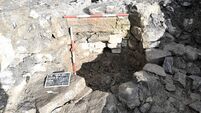New plan for student bed space schemes

They said “occupancy restrictions and controls” can be used instead as conditions of planning to protect the residential amenity of established residential areas.
The details are set out in a report to members of Cork City Council’s Strategic Planning Committee which recommends the terms of a new policy to manage the development of student accommodation in the city.













